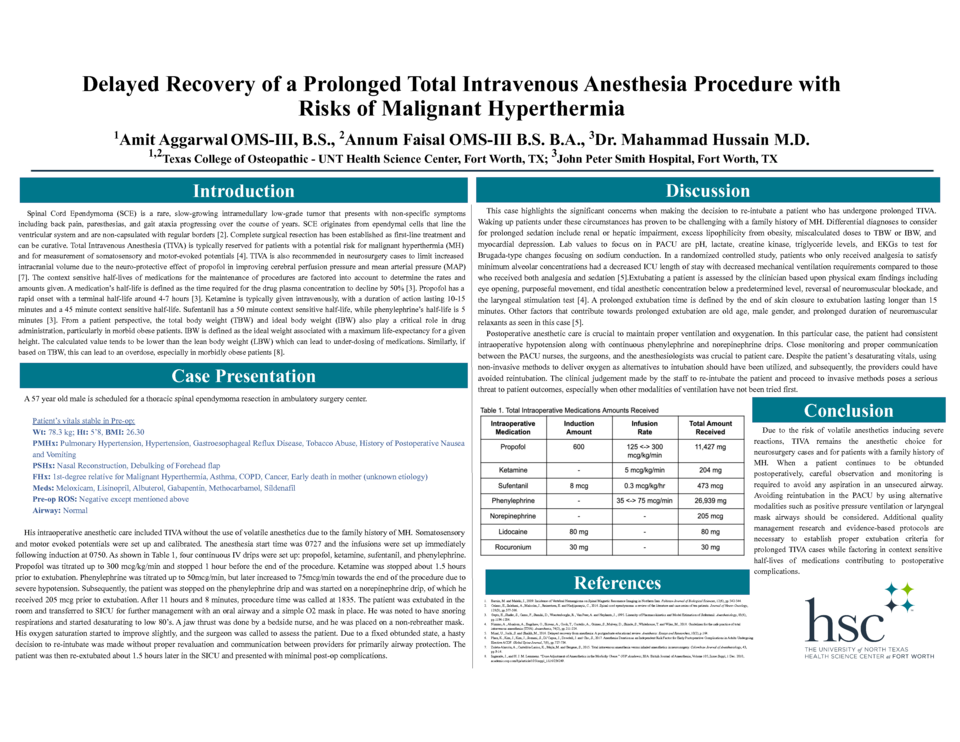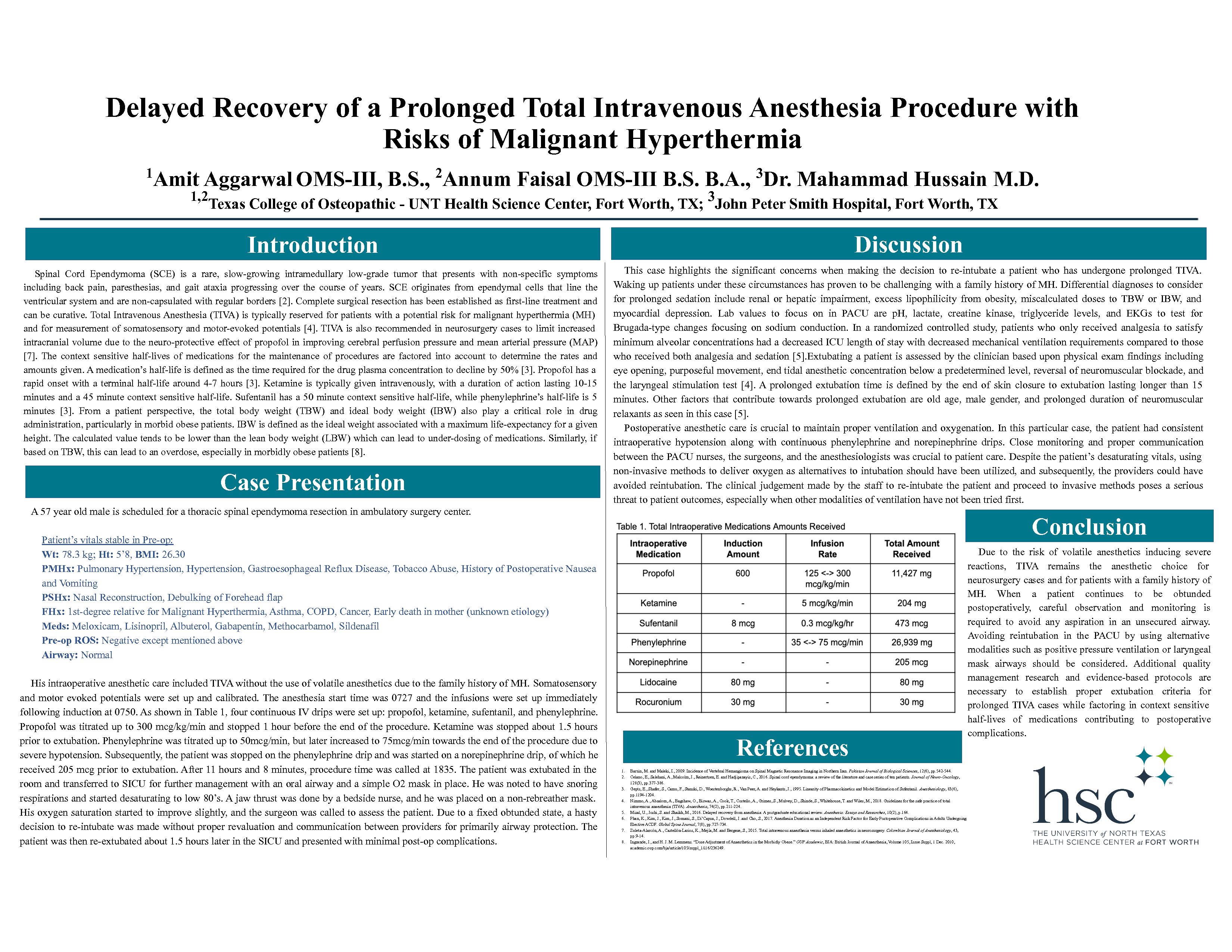Abstract
Background: Spinal Cord Ependymoma (SCE) is an intramedullary tumor that requires surgical intervention. Total Intravenous Anesthesia (TIVA) is indicated for such neurosurgery cases. The pharmacodynamics and pharmacokinetics of each drug used must be factored to safely extubate and maintain the airway postoperatively. Case: A 57-year-old male with a history of pulmonary hypertension presented to the hospital with complaints of gait difficulty and sensory deficits secondary to SCE. The patient was scheduled for surgery, and the decision was made to do TIVA due to a family history of Malignant Hyperthermia. Three continuous IV drips were placed: propofol, titrated between 125-300 mcg/kg/min, ketamine at 5 mcg/kg/min, and sufentanil at 0.3 mcg/kg/hr. The patient required a phenylephrine infusion at 35 mcg/min to maintain hemodynamics, which had to be titrated up to 75mcg near the 11-hour point due to severe hypotension. Following extubation, the patient was placed on an oral airway with a simple O2 mask in place. He was noted to have snoring respirations with oxygen desaturating to the low 80’s. A jaw thrust was done, and he was placed on a non-rebreather mask. Due to a fixed obtunded state, a hasty decision to re-intubate was made without proper revaluation and communication between providers. The patient was then re-extubated 1.5 hours later with minimal post-op complications. Conclusion: This case illustrates the challenges of prolonged TIVA in the assessment of safely extubating patients while maintaining the airway in the postoperative period.






